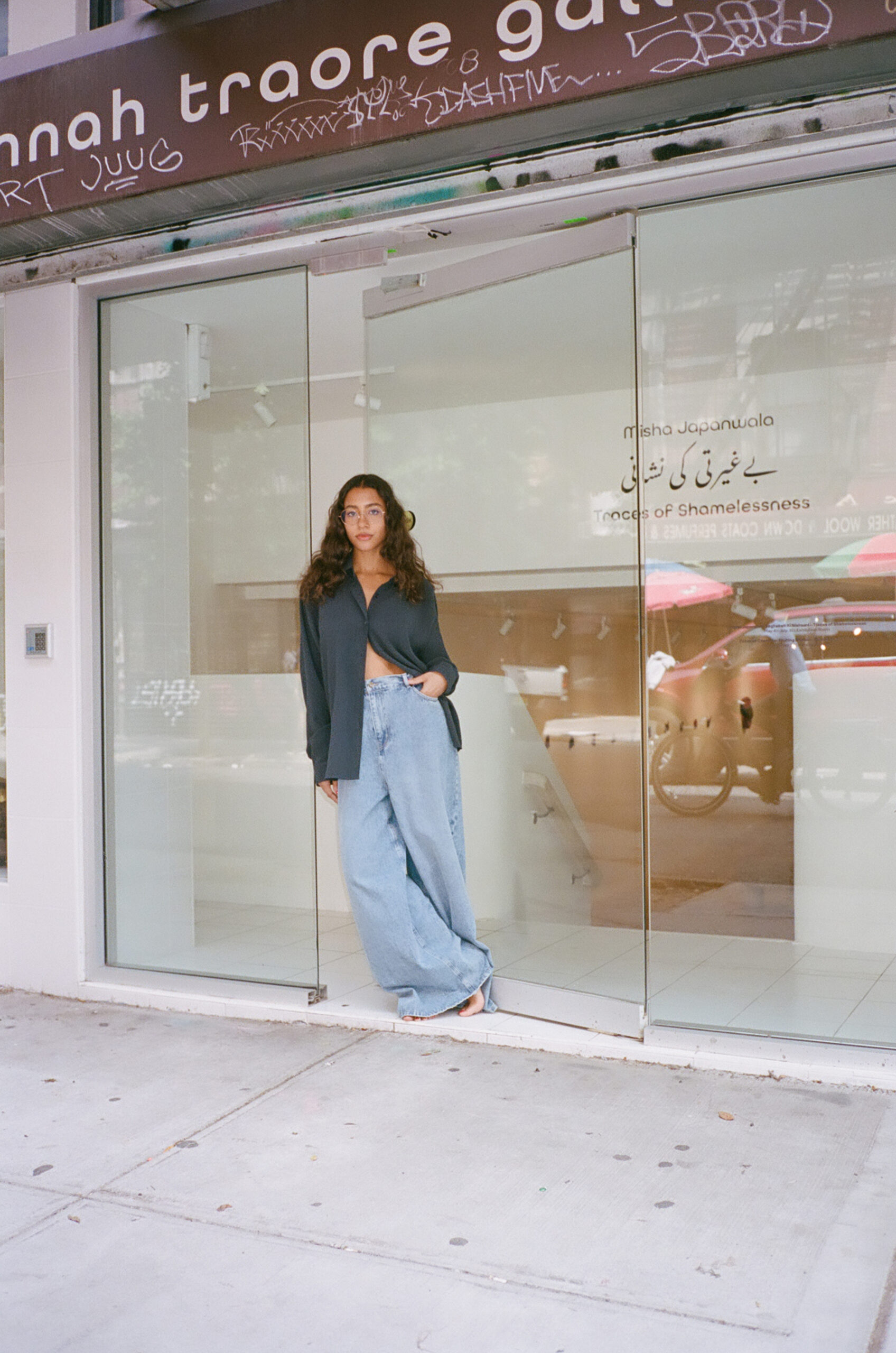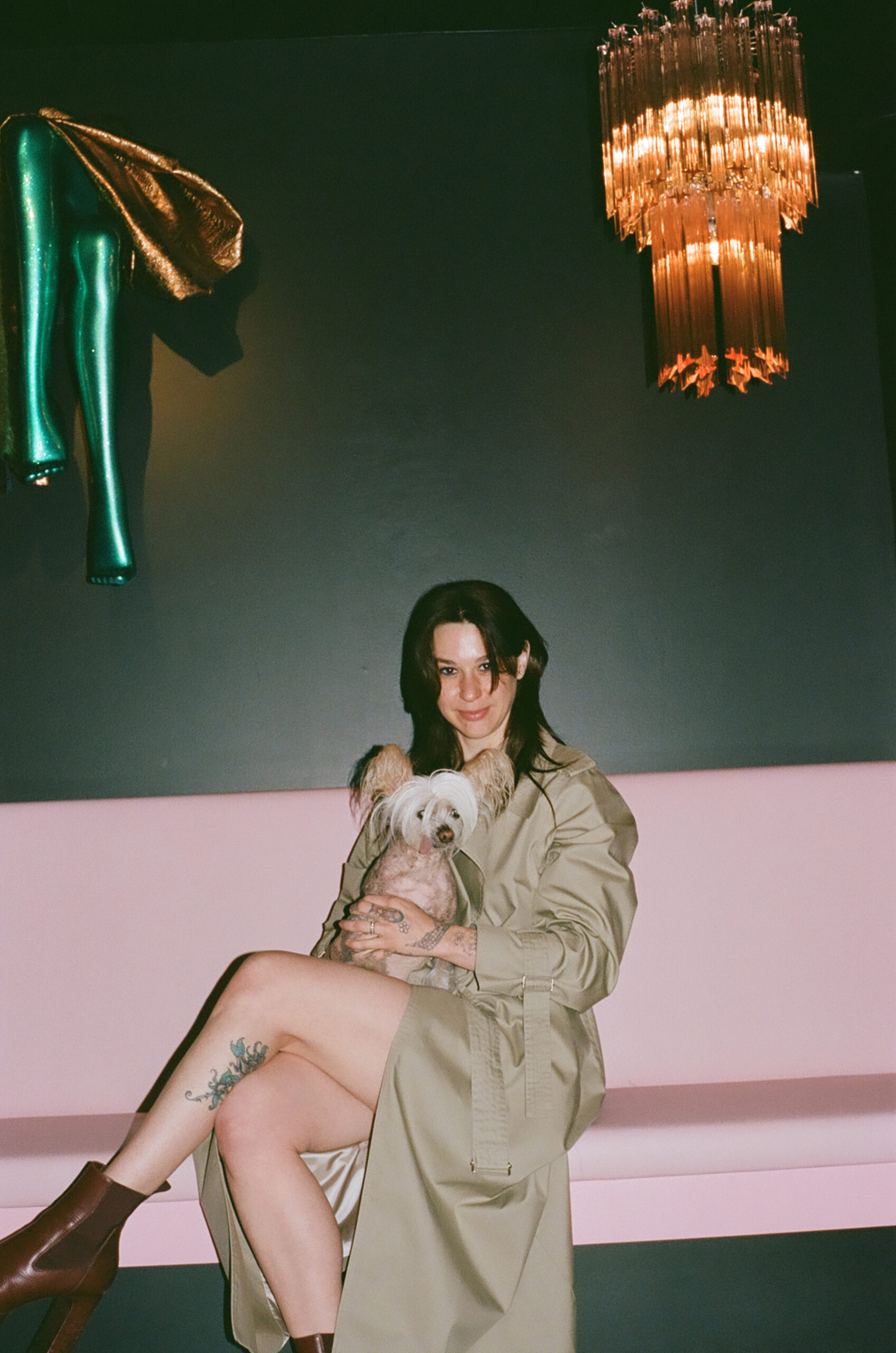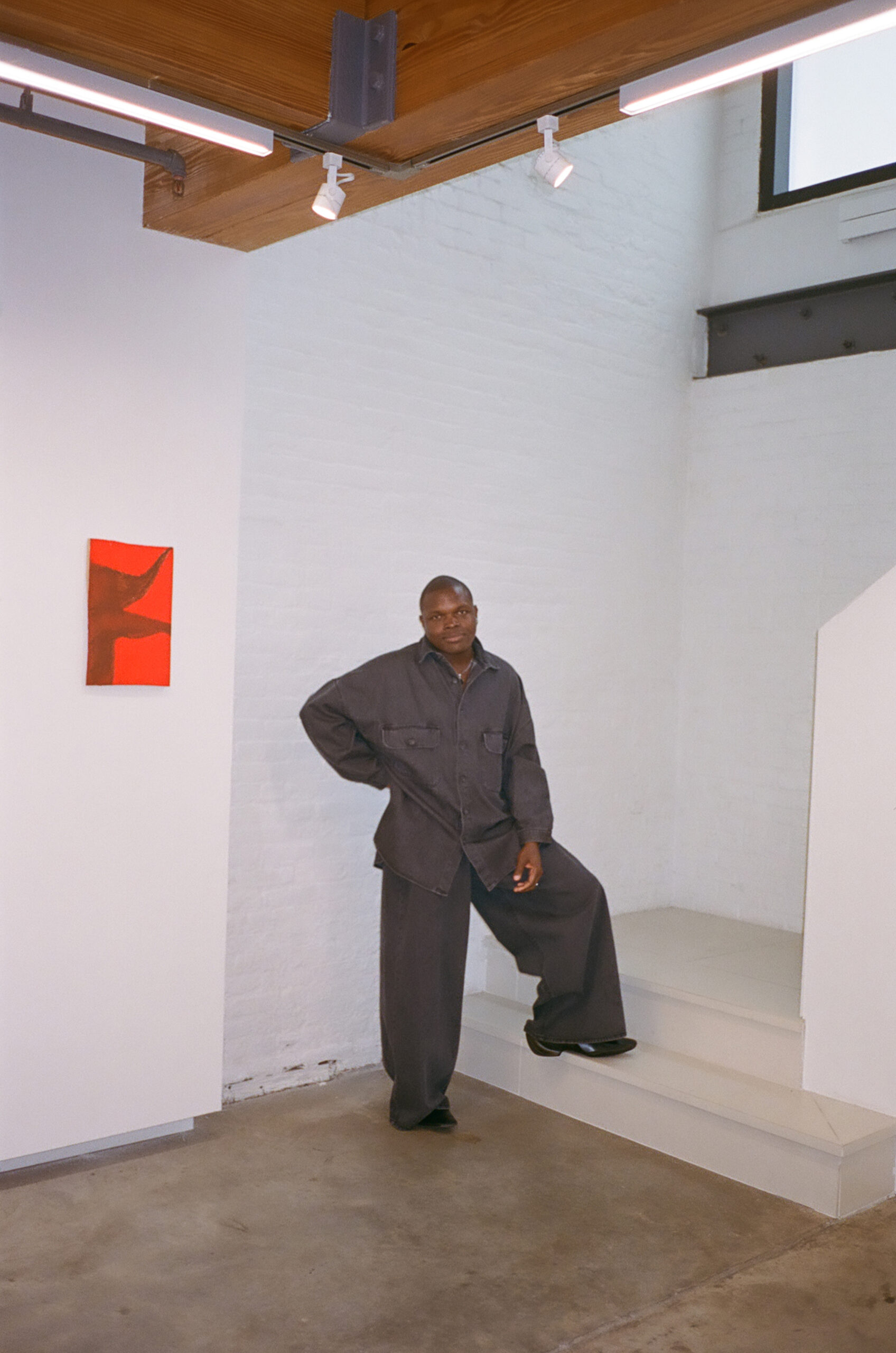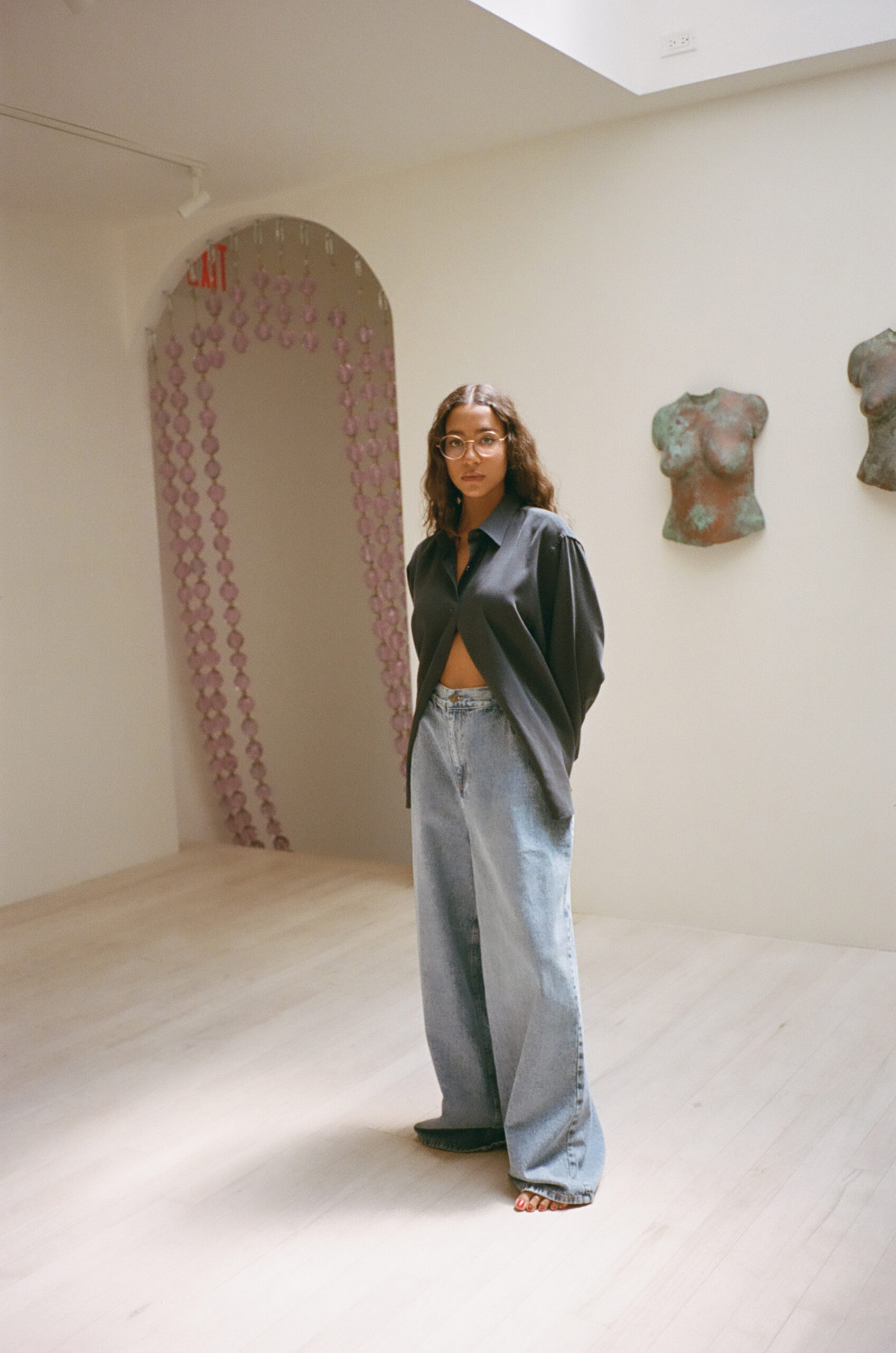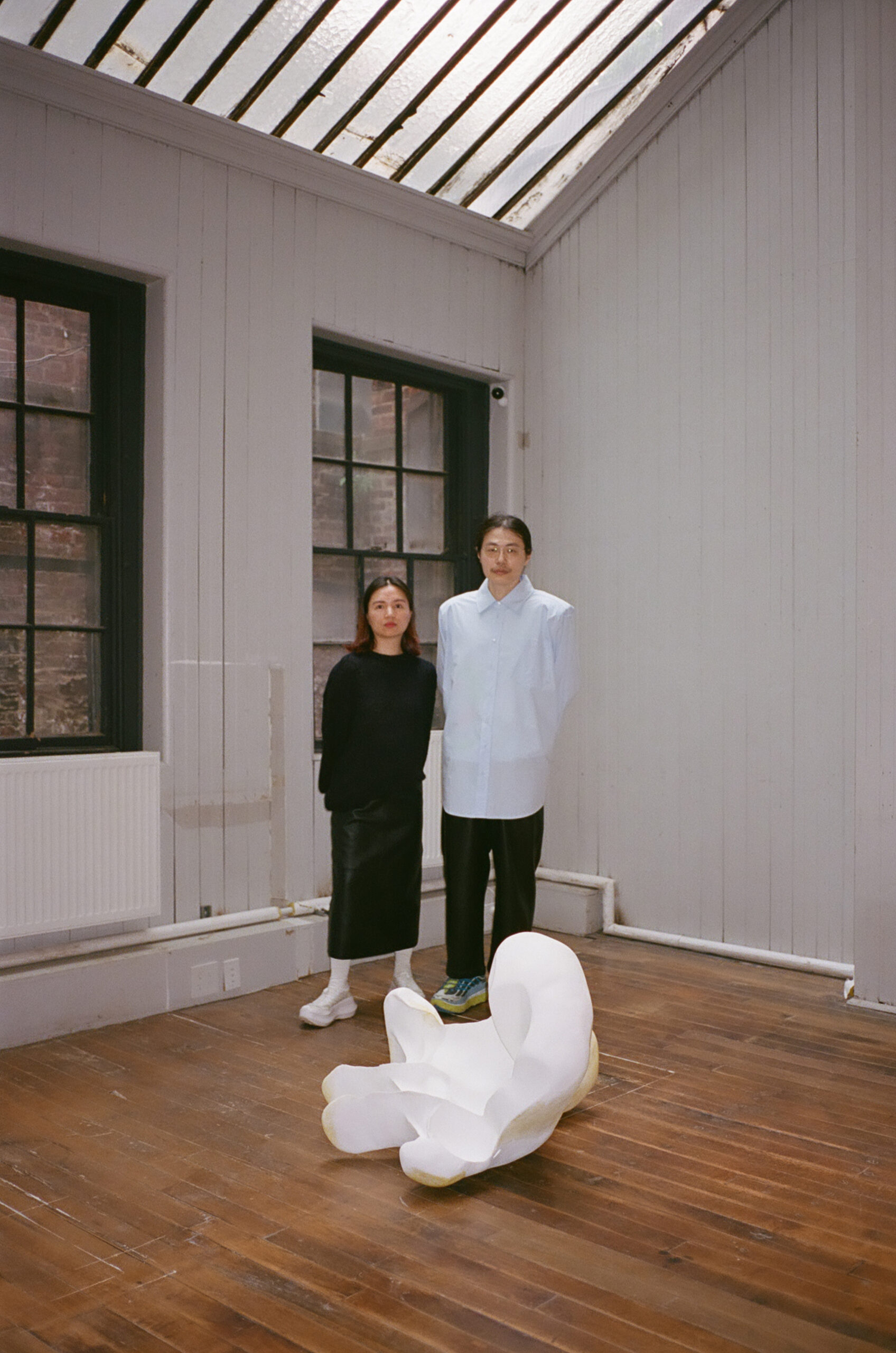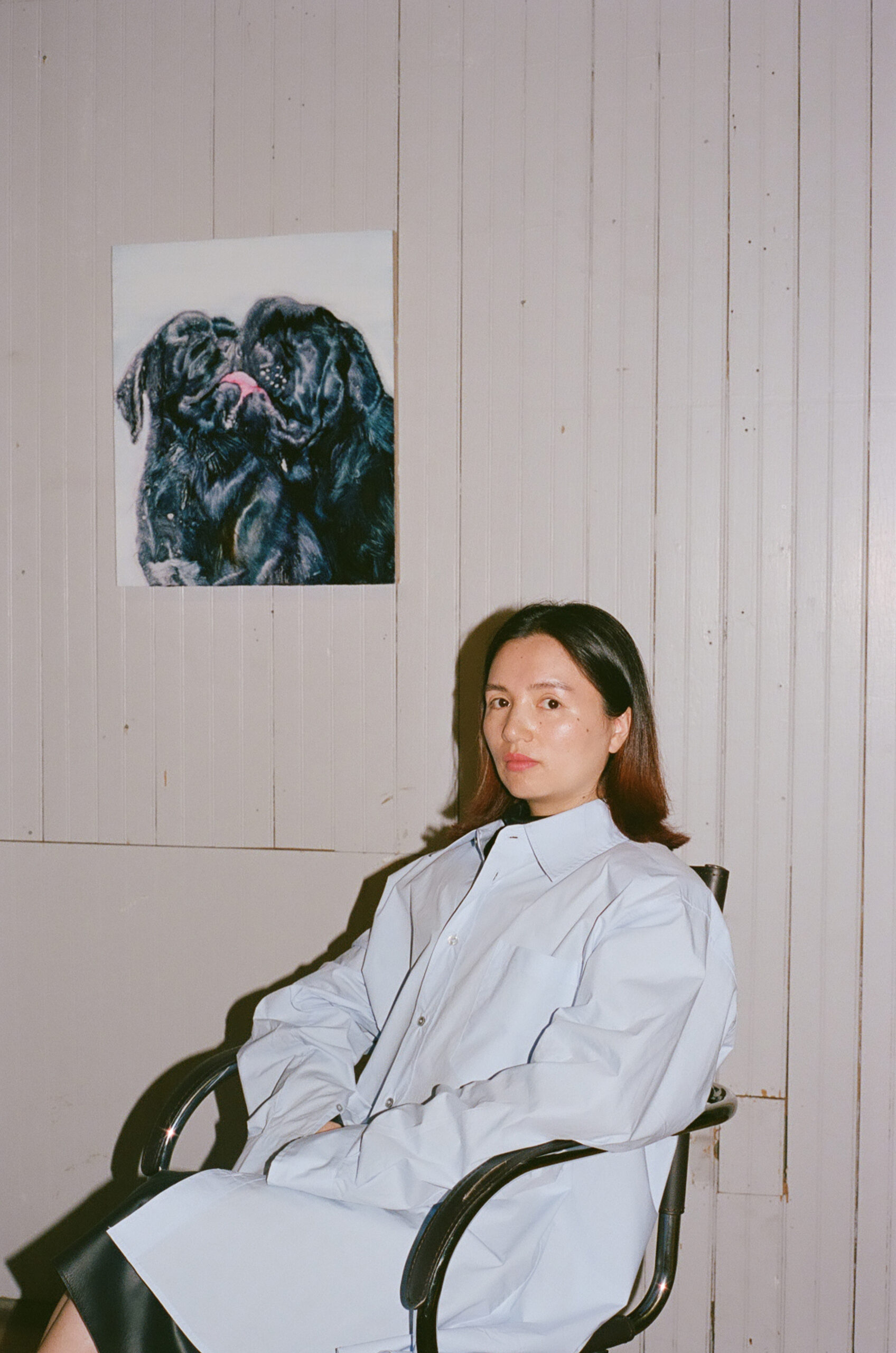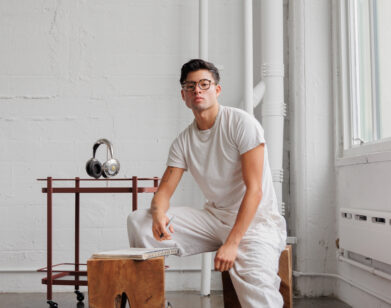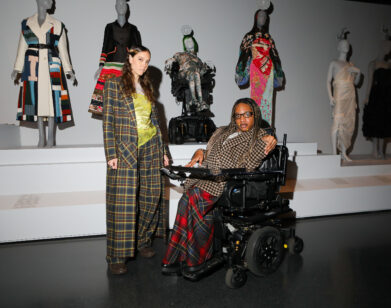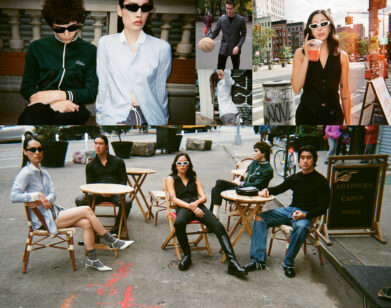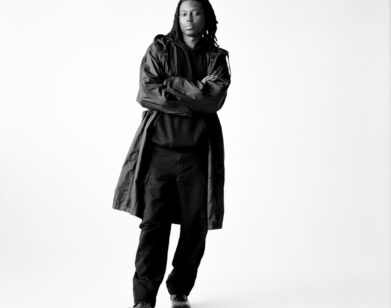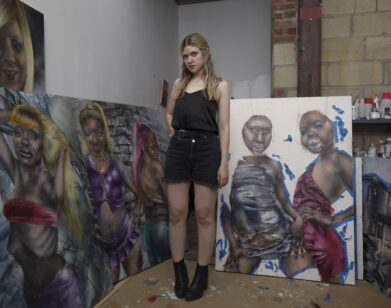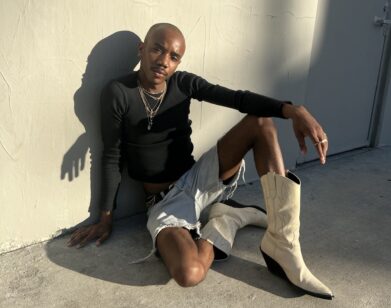ART
“I’m Not Thinking About Buying”: Meet the Gallerists Reviving NYC’s Art Scene
“It might have sounded like a bunch of young kids in downtown New York working for each other, but the stakes were very high,” the artist Richard Serra told a gathering at The Strand bookstore in 2014, recalling his milieu’s 20th-century experiments and successes in Lower Manhattan. But regarding the contemporary state of affairs, Serra was exasperated: “The market has such a stranglehold on the whole situation.” Who could think otherwise? Art was getting vertiginously more expensive—and so too were studio rents, art schools, and everything else. Nearly ten years out from Serra’s pronouncement, zombie formalism still haunts art fair halls and commercial mega-galleries have taken on roles once reserved for museums.
When Soho’s median home price is pushing $2k-a-square foot and “Dimes Square” has a luxury hotel, it’s easy to dismiss money-obsessed Manhattan as a lost cause for artistic innovation. But what does the market look like below 14th street?
While big artworld names—Luhring Augustine, Perotin, and the Zwirner outpost 52 Walker, for example—have claimed sections of Tribeca and the Lower East Side alongside downtown staples like PPOW and Bortolami, less institutional and at times more daring gallerists are thriving too. At Anonymous, K.O. Nnamdie brings their photo-maker’s eye and relational sensibility from Restaurant Projects—their peripatetic curatorial platform combining research, exhibition-making, and hospitality—into the Baxter Street space founded in 2008. Taylor Trabulus also joined an extant gallery, Company, teaming up with Sophie Morner to glow up from their previous fifth-floor Eldridge Street space into a multilevel Nolita location designed by the architectural firm BoND. “I’m talking global domination!” Trabulus proclaims.
Meanwhile, Hannah Traore opened her eponymous LES venue last year after stints at multiple major Manhattan institutions, explaining, “I just had so many ideas that I wanted to pursue. Having a brick-and-mortar space gives me the autonomy to literally do whatever I want.” And Yve Yang and Chando Ao, the pair behind YveYANG Gallery, bopped from Boston to Midtown before settling on Soho’s western edge to expand their roster and remit.
Whether by initiating their own spaces or collaborating with existing ones, all five gallerists are leveraging their experiences and expertise in and beyond the art world to bring artists unknown and established to ever-expanding publics to shape a vital and hopefully still surprising NYC scene.
———
TAYLOR TRABULUS
DREW ZEIBA: So, you bring her to work every day?
TAYLOR TRABULUS: Yes. I bring Misty to work every day. She is my gallery assistant. And sometimes also the boss.
ZEIBA: What led to you working in galleries?
TRABULUS: I studied studio art at Bard. And then I moved to the city thinking that I would be an artist and I got a studio, but I got a job working for this amazing woman named Nicole Klagsbrun, who had a really incredible gallery. She started in the 80s and she kind of mentored me. She took me to fairs and she allowed me to curate a show and put on events. So I was finding that creative outlet through working with her. And I think, for me, I just never could be alone that much.
ZEIBA: How do you encounter artists? And how do you work with them to develop a show?
TRABULUS: It’s definitely varied. Sometimes it’s through other artists that we already show. Someone suggests that we check this person out or some of the artists we work with at Company I [also] worked with at Shoot the Lobster and Martos. So I get to continue those relationships. Some artists are people whose work we saw at a museum or another gallery, and we liked it. In November, we’re doing a Sylvie Fleury show, which is really major. We show a couple of artists who are more established, but this is kind of a new experience for us. She’s definitely an icon to me. It’s been really cool to work on that. My motto is, “the artist knows best.” They know what’s best for their work. I would never tell an artist what to do unless they ask for advice. But I do think it’s a very collaborative relationship that we have with most of our artists, and especially the ones that have been at Company a long time.
ZEIBA: You often stage shows that are—well, “risky” is a lazy word to use… but they’re not strictly “art” as many people often define it. I’m thinking, for example, of your showing Women’s History Museum, a fashion-art project and curated vintage retailer. How do you think about bringing fashion or performance into the gallery?
TRABULUS: This is one of the most important things for Company’s identity, that we platform artists that do things outside of just a gallery show every three years. We are really interested in what it means for the gallery to act beyond that. Women’s History Museum is the perfect example. They’re a fashion collective and they go in and out of the art world. Even Raúl de Nieves, who is also a musician. Or the painter Jeanette Mundt, whose show we just had. We just started this TV talk show with her where she interviews creative people in New York. All of our artists live their art. Colette Lumiere is kind of that perfect example. We love to think of the gallery one day being able to produce television or films that our artists want to make. This really gets to the heart of Company and what both Sophie and I really bonded over when we first started talking about doing this thing together.
ZEIBA: Tell me about how you two collaborate.
TRABULUS: I am so happy to have a partner at the gallery. I don’t know how my colleagues do it alone. Oftentimes, I will get in my own way or in my own head. And Sophie’s also introduced me to things I would never look at because I have my own tastes, so it just kind of opens up my world a little bit. And we really try to encourage that with everyone that works here. Anyone on the staff can suggest an artist or suggest a show if they have an idea. It’s a business, so there’s of course some sort of structure, but we don’t want to encourage so much of a hierarchy in that sense. I just like having someone else to do it with. It’s so nice to have someone to bounce ideas off of. In the end, that’s worth more to me than having just my name on the door or something.
ZEIBA: Do you have an imagined audience? Who are the Company visitors?
TRABULUS: I think there’s something at Company for everyone, and I think each of our artists speaks to a different audience in a different way. We have those people that we’ve had relationships with for forever. We represent a lot of LGBTQ artists, so there’s also a lot of LGBTQ collectors who are interested in our program because of that.
ZEIBA: What makes a good opening?
TRABULUS: I love when our openings are really crowded, even though I think that’s not what people would say makes a good opening, but I do love the energy that it creates. I think if the artist is happy and the show is good, it’s going to be a great opening. I don’t think it has anything to do with the party part of it. It’s more about the energy in the room. That’s kind of contagious, and it rubs off on the gallery and the people coming in through the doors.
ZEIBA: What’s coming up that you’re particularly excited about?
TRABULUS: Well, definitely Sylvie [Fleury] in November. That’s a dream come true. Colette at Basel Features. I think people are going to be pretty amazed because our booth is kind of a mini version of that show.
ZEIBA: Am I hallucinating this, or is there also a bar in the basement?
TRABULUS: Yeah. It’s a lesbian bar. That was the must. We’ve done events down there and, again, we wanted to create a space where people could come and hang out. There’s always a place to sit at the gallery. We really didn’t want it to feel like a place where you weren’t welcomed. We wanted people to come and stay. So having places in the gallery that encouraged that was important to us.
———
K.O. NNAMDIE
DREW ZEIBA: What’s up?
K.O. NNAMDIE: Nothing much. Just got back inside from doing some walkthroughs at the gallery for the show I put together called “Photography Then.”
ZEIBA: Who’s in it?
NNAMDIE: There are six artists, Jack Pierson, Buck Ellison, Alyssa Kazew, Jesse Gouveia, Thomas Polcaster, and Chessa Subbiondo.
ZEIBA: When you put together a group of artists, what are you trying to stage, whether specifically in this instance or generally in your curatorial practice?
NNAMDIE: I love doing a lot of group exhibitions because I like to remind myself that the world is kaleidoscopic. Also, it’s a good practice to see similarities rather than differences. With any show, the way that I think about it, how it arranges, is the same way that I approach making food—or maybe even the same way that I think music is made. Each artwork or artist is a note and I’m just trying to get it to sound the way that it did in my head.
ZEIBA: You mentioned food, which is an obvious parallel: You’re a director at Anonymous, but you also are an advisor, and founded the curatorial platform Restaurant Projects. How do those fit together?
NNAMDIE: I think of it as more of a collaboration that I’m having with Anonymous and its history, which spans many years. Restaurant Projects is an umbrella, and then under that umbrella falls my advisory. It’s a research-based advisory. I love to work with clients that are primarily people of color, as well as women. Every season I’ll do one Restaurant Projects show, and I think slowly I’ll be more focused on really helping new collectors get their voice and gain access to an art world that is a bubble.
ZEIBA: It’s really interesting that you bring up not only who is coming through the doors, but who is collecting, who is participating in the economy of art. When you’re putting together a show, who is your imagined audience?
NNAMDIE: I would be lying if I said that I wasn’t thinking of certain people who would come and appreciate the work. I mean, I would be incredibly out of touch if I said otherwise, right? With the show “Photography Then,” as someone who used to be an image maker for 10 years, I knew that there wasn’t really a space for a lot of image makers to be celebrated commercially. I was very pleasantly surprised that we have gotten a lot of teachers and students coming by, and that for me is the most important thing. It was really about a community that is often overlooked. I think photographers are the most used profession. People use photographers for everything. And unfortunately, they don’t get a lot of support and I just really wanted to celebrate my peeps.
ZEIBA: To what extent are you involved in the install and the hang?
NNAMDIE: Well, I’m 32 now, but I started my career [as a photographer] around 13—I had a manager and all that stuff. I could never shake the impact that photography has had on my life. With a show, I want to be 100 percent present for every single move that’s made. The lighting is intentional, the spacing out between works. To bring it back to this idea of Restaurant Projects, I really do care a lot about hospitality. I’m very much involved with every aspect of the show, down to what the press release looks like, the order of the checklist, to the programming that’s happening. It’s all very, very intentional because ultimately I’m supposed to be servicing the community and the general public.
ZEIBA: You mentioned hospitality. What makes a good opening?
NNAMDIE: For me, what makes a great opening is knowing who your audience is and knowing what you can do to make them have a great, memorable night. I feel what made a great opening for our show “Photography Then” was, well, we actually just invited the whole community and didn’t actually have any drinks at the opening, which is not a thing I usually do. I really wanted to see if people were there for the community or there to party. Of course, afterwards, we had a really amazing after-party and 300 people were there, which is insane. I understand this is probably a really simple answer, but if you give a damn, then certainly people who care about you or what you do will also give a damn.
ZEIBA: When you say, “Bring the community,” who do you mean?
NNAMDIE: When I talk about community, I just mean be intentional. The bare minimum is not good enough. You must do things with true and full intention behind them. And so when we do exhibitions, we have an intention for who we are speaking to. It’s important to know your audience but also know that that’s not the limit so that you can speak, meet, and interface with individuals that you may never interface with in the art world bubble.
ZEIBA: This is a very inchoate question, but I’ve been wondering, do you feel like you have a role as public mediator or persona by virtue of being a curator?
NNAMDIE: I think it’s just like any other job that is public-facing. I feel it is actually a privilege and I take it quite seriously as I know a lot of my friends that are also directors and curators do as well. We love to have fun, we love to cut up, but ultimately our job is sharing narratives—and that is something to take seriously. I definitely have had that reminder during this show. A lot of people have thanked me and my colleagues for taking the time to talk to them about it. And we say, “Absolutely, of course.” That’s not a standard practice when you walk into a gallery—you’re never encouraged to talk to the person who is there. For some time, I actually wanted that when I walked into a space, but at a certain point it is important to break that fourth wall and engage so that people remember that we are here for them.
———
HANNAH TRAORE
DREW ZEIBA: The first thing I noticed walking in was that there’s not a lot of right angles in the gallery.
HANNAH TRAORE: I love that you noticed that. That’s purposeful. It’s so hard, because I didn’t want the gallery to feel like a white cube. But also, I didn’t want to take away from the art. It’s funny, because you go to Mexico City and all the galleries are just incredible homes with amazing interior design. But here in New York, that’s not really a thing. So how do I make sure that the gallery is beautiful even without the art, and it’s also conducive to celebrating the art? Me and the architect were like, “What do we do?” And the way we figured it out was putting in these curves. It kind of happened organically. These curves are hiding hideous situations underneath. And then, to even it out, we also added that arch.
ZEIBA: You grew up with a lot of art. You were at MoMA for a bit, and Fotografiska with Isolde Brielmaier, right? What was the impetus to go out on your own?
TRAORE: I just had so many ideas that I wanted to pursue. And having a brick-and-mortar space gives me the autonomy to literally do whatever I want. My friend is actually coming today to talk about having her wedding ceremony here, and the fact that I can just say, “Yes,” is so nice. I can do whatever I want. If I’m really connecting with someone’s work, I can just put it in the gallery. My artist Camila [Falquez] is doing this incredible installation this summer. We filmed a round table of trans activists in the city and it’s so beautiful and so powerful, and the fact that I can have the space to hold such important conversations makes me so fulfilled and happy.
ZEIBA: How do you build relationships with artists?
TRAORE: I like to be friends with my artists because I work with people who I also like as people. With most of them, I’ve built really beautiful relationships, but my favorite part of working with artists is being involved in the process. So I was just at Camila Falquez’s studio Sunday, looking at her new work and talking about what would work in terms of the installation. Being involved in that way is so much fun.
ZEIBA: Right now you have the exhibition with work by school kids, Our Neighborhood, in the front and you have this solo presentation of Deborah Czeresko, Fruiting Bodies: Creatures of Culture, in the back. What exactly do you look for in artists?
TRAORE: Honestly, I’ve never once planned which shows are going to be together. It’s always worked out quite well. And I’ve realized that what I like is stuff that I haven’t really seen before. Because of all these interviews I’ve done, I’ve had to actually think a little bit harder about why I like what I like. If an artist plays with color in interesting ways, I’m most likely going to like them. But I also have a black-and-white show coming in November, and I think it’s beautiful. It’s also interesting when artists use materials in new and interesting ways, like Anya Paintsil uses her own hair in the work. James Perkins has created an entirely new technique to make his work. Moya Garrison-Msingwana’s conceptual grounding is really different than anything I’ve ever seen, and the way he paints the figures, I’ve never seen it before. I just like artists who set themselves apart. But what I’m most drawn to would be color, even if it’s a lack of color.
ZEIBA: Who typically comes through the gallery and who is the audience you have in mind?
TRAORE: I’ve been really lucky. The Chief Curator of painting and sculpture at MoMA, the department I was in—I saw her last night. We get people from her, to someone walking down the street who’s never been in a gallery before, who comes in and asks if they need to buy a ticket. But who is this for? It’s for my people. And by my people, I mean people of color, queer people, Indigenous people, immigrants. But it’s nice that everybody comes. I think it’s important, because a lot of my people don’t feel comfortable in most galleries. I was speaking at FIT last week and one of the students was like, “I actually came to your gallery for the Helmut Lang opening and I felt so comfortable. Going into galleries is often so scary.” And that made me so happy.
ZEIBA: Speaking of the Helmut Lang opening, how are you bringing together things that are a little disparate, like fashion, design, art, within the confines of a gallery?
TRAORE: I’m about to repeat myself again, but it’s just true. I do what I want, and fashion is really important to me. Children are really important to me. And those are two things that I thought I would pursue. I wanted to be a teacher until I was a sophomore in college when I took an art history class and was like, “Actually…” So of course these things will trickle into the gallery, especially fashion. I want to be known as an art space that loves fashion. I didn’t know how I was going to do it, but it just kind of organically happened. Like Camila Falquez being a commercial fashion photographer and having her first show here. And in September, Quil Lemons, another photographer in the fashion world, is having his show. And my next show is with Misha Japanwala, who’s featuring her [art]work alongside her fashion designs. I’m also doing things that are a little more intentional, like these fashion collaborations once a year. The first one’s in September. I’m so excited.
ZEIBA: Can you say more?
TRAORE: Basically, I’m going to be asking a designer and an artist of my choosing to collaborate on a capsule collection with me. And what’s exciting about it is that it’s a conversation, back and forth. So for example, with this collaboration, the photographer is like, “Okay, I’m thinking about movement, and I want to take snapshots from video instead of actual photographs.” So then the designer’s like, “I’ll use materials that move on the body in a specific way.” You know?
ZEIBA: What makes a good opening?
TRAORE: Vibes. Honestly, I don’t know how, but the people who come to my openings are such a vibe. They’re always super well-dressed, and having really interesting conversations. They’re always really excited about the work. And I’ve noticed every opening is different. So at Camila’s opening, a huge portion of the crowd was in drag. And that energy was fucking amazing. Moya’s opening had a very Toronto crowd, which is where we’re both from, so that made me so happy. But what makes a good opening is the people who are there because no one’s buying. I’m not thinking about buying. It’s a celebration of the work and the artist.
———
YVE YANG and CHANDO AO
DREW ZEIBA: How do you start working with artists you’re interested in? What’s your relationship like with them?
YVE YANG: Usually, we do studio visits with them. It was probably two or three rounds of studio visits in half a year for this exhibition [this sentence no sentence]. Also, after the group exhibition, we will talk to each of the artists. For example, we’ve already talked with Soren Hope and Ang [Ziqi Zhang] for a solo show in the coming fall and next spring.
ZEIBA: Chando, I know you’re a practicing artist. How did you two come together? And how does your practice as an artist inform the gallery?
CHANDO AO: We met in Boston.
YANG: A long time ago. Before we both entered into the art thing. We met in a university where I was in a master’s program and I was studying technological entrepreneurship. We were both from non-art backgrounds and we just went to galleries, museums in New York and we slowly found this interest in art. So he transferred his major and I was doing some other business, like startups. And slowly we decided that he wanted to practice as an artist and we wanted to do gallery.
AO: Yve is a serial entrepreneur. For me, I have sort of a complicated background where I grew up in China. I went to school in three different countries: China, Australia, United States. And I have been through three different majors, economy, engineering, and art, then four different colleges, Northeastern, Tufts SMFA, and MIT.
ZEIBA: You guys had a space in Boston too, right?
YANG: Yes.
ZEIBA: So when you moved to New York, you already had a gallery in mind?
YANG: It was a very interesting, fun, successful year in Boston. We had seven exhibitions there in eight months. And people really appreciated that we were doing something very different compared with other galleries in Boston at that time. But the difficult part is we have a lot of writer connections in New York and they never wanted to come to Boston to see a show and to write something up for us. I felt like we had to make the move, just for the gallery, not for our personal lives. We loved Boston a lot.
ZEIBA: What’s been the biggest difference between running a gallery in New York and Boston?
YANG: I feel like audiences are very different.
AO: While we were in Boston, there were a lot of scientists or people in different professional disciplines that came to see our shows. In New York, I feel like it’s a very professional art world, it’s very direct. They understand what contemporary art is, and you don’t really have to do pre-education, which makes it almost become very efficient.
YANG: Also, I found it interesting that in this location, the Soho area, it’s supposed to be a lot of random pedestrians, but actually it’s not. Pedestrians probably stop by Grand Street. They never walk in this direction.
ZEIBA: When you’ve put up a show, do you have an ideal audience in mind?
AO: I mean, the show is purely for the artist. We do have audience in mind.
YANG: Before the pandemic, we found more international travelers that we met everywhere in the world, maybe from Brazil or Belgium, maybe in China. But during the pandemic, we definitely met a lot less of those people. But they are very interesting people and they have very different perspectives, or I should say a broader perspective.
ZEIBA: Obviously, Boston has a much smaller gallery system. When you relocated to New York, was there something missing in this city’s gallery landscape you sought to fill? What sorts of perspectives are you trying to foreground with this gallery that you don’t see from other galleries or institutions?
YANG: When we were in Boston, we were doing a lot of interactive technology art. Compared with the whole Boston art scene, we are very contemporary, very experimental. And here in New York, we had a midtown location before we moved here. That was before the pandemic, 2017 to 2020, and we also tried to do very experimental things in that space. And now that we moved here, we want to be more complete, not just experimental driven.
AO: What YveYANG can offer is non-binary, non-white, almost like a cross-continental vision that is not really included in the mainstream. To have a different perspective, to have a different viewpoint I think is what is very important for YveYANG.
ZEIBA: What inspired you to move downtown?
AO: For our audience. Our audience is more downtown, whether international or living in the Lower East Side or Brooklyn. So it’s definitely more accessible, more pleasant.
ZEIBA: Looking at this show, I’m wondering how you think about putting an exhibition together visually and spatially.
AO: The way that we work is Yve will come up with the structure with the artist. And then I will come in to talk to each one to see how they sort of work out conceptually together. And visually, once you understand the space well, and you understand the work well enough, that will guide you to make the most sensible decision. We don’t really decide which work goes where; the artist and the work decides, in my opinion.
YANG: Chando helps me a lot with the exhibition design conceptually. And we have very different personalities. He’s always in the sky and I’m a person on the ground.
ZEIBA: You were describing the more experimental stuff you used to focus on and still do. What did you mean by that?
AO: I will pick one of the very early works we did. It’s Image of the City by Bjørn Sparrman, where he did a marble sculpture, which is vibrating from sound. And the sound is actually the sound of crickets.
YANG: The most experimental thing we’ve ever done is one exhibition that we did in Shanghai in 2018, the first solo exhibition we did with David Riley. He is an animator and a game developer. But before we did this first solo exhibition with him, he never did a serious art exhibition.
AO: His medium is animation and games.
YANG: So we rented a pop-up space in Shanghai and we activated his game and people could come play the game in the gallery with a huge projection screen.
AO: I think what makes that show so radical is that the game he made is actually a self-generated game. It’s kind of like what AI does right now, but it’s like before all this went viral. So he’s been a very early pioneer in that discipline and medium.
ZEIBA: My last question is, what makes a good opening?
AO: That’s actually a really simple one for me. A good audience makes a good opening. A good audience is somebody who enjoys the art, enjoys the moment, and can actually have fun with the artist. I feel like the opening is really a cherished moment for the artist who created the show.
———
Hannah Traore Hair: Hide Suzuki using Oribe
Hannah Traore Makeup: Ayaka Nihei using MAC at Walter Schupfer Management

